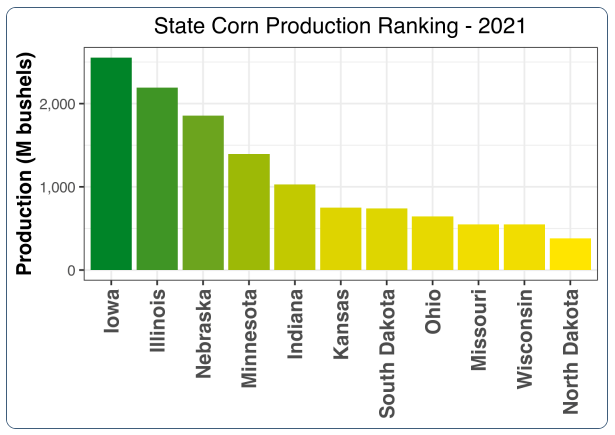US corn is primarily grown in the Midwestern region of the country, or the central states, where the soil is rich, deep, and the summers are ideal for growing the grain. Within that midwest region there is actually two different subsets of areas for corn growth – the Eastern Corn Belt (ECB) and the Western Corn Belt (WCB).
The exact median line between the Eastern Corn Belt vs Western Corn Belt seems to be subject for common debate. Depending on what data you are looking at, where you are located, and who you are talking to the line between east and west may change.
The most common answer, however seems to use the Mississippi River as the guidepost between east and west. Using this as our guide, it would split corn production with the East having roughly 40% and the west having roughly 60% of production.

Looking at the top producing 11 states, only a few are in the Eastern Corn Belt (Illinois, Indiana, Ohio, and Wisconsin), while two of the top three are in the Western Corn Belt.
Demand in Eastern Corn Belt vs Western Corn Belt
What’s more important, however, is the demand centers in each corn belt and how grain flows from farms to end users.
Looking at the top three producing states of corn (Iowa, Illinois, and Nebraska) as an example. Iowa and Nebraska are much more rural than Illinois is. Another nuance is the demand type. Although the demand in each of those three states is high, Nebraska and Iowa contain significantly higher numbers of feed animals than Illinois does. Illinois on the other hand has one of the largest industrial corn processing centers in the country producing products like high fructose corn syrup and starches in Decatur.
With differing types of demand it is common to see differing buying patterns from end users. Along with those differing buying patterns comes differing lengths of coverage, differing transportation modes, and differing basis values.
Title Image Source: USDA NASS

